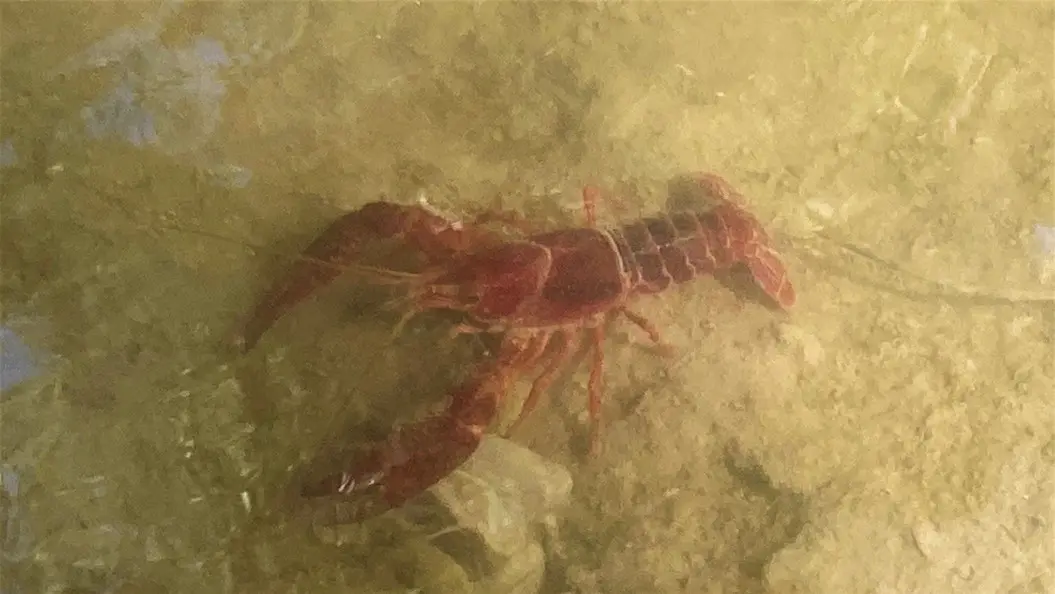The Red Swamp Crayfish

BABY LOBSTERS AT WETLANDS PARK? WELL, NOT REALLY…
Clark County Wetlands Park is home to at least two of the approximately 315 species of crayfish (or crawdads) found in North America: the red swamp crayfish (Procambarus clarkii), and the signal crayfish (Pacifastus leniusculus). Both were introduced to the Colorado River system by the 1940’s, probably as food for game fish. Today they are part of the intricate food web found in the waterways of Southern Nevada.
These hard-shelled, jointed-leg crustaceans share the order Decapoda with lobsters, shrimp, and crabs. The order name literally means “ten-footed” and includes an amazing array of ten-legged walkers that live in or near salt or fresh water. Crayfish really do look like little lobsters, with their set of claws and four pairs of “walking legs.”
Good habitat for red swamp crayfish includes warm marshes, reservoirs, irrigation systems, rice paddies, and slow-flowing rivers with mud or sand bottoms and lots of organic debris. They even tolerate slightly saline water, so the Park’s ponds and streams are perfect for them. These crayfish construct simple burrows in the mud. They sometimes cover the burrows with a mud plug to conserve water if the burrows are not right at the water’s edge. That way, the crayfish can live in seasonal water sources and survive dry spells up to four months!
During mating season, which is usually in the fall, female crayfish secrete a sticky substance on their abdomen and attach their eggs to it. Females carrying eggs are said to be “in berry.” The females actively brood their eggs until the offspring hatch. The females then carry and house the youngsters until they have completed two molts and are free swimming.
Crayfish are considered opportunistic omnivores, meaning they’re not picky eaters. They’ll eat plant material, animals (mostly insects, fish, snails, and other crayfish), detritus, and sediment. They can pack a mean pinch, as my brothers and sisters and I found out as kids. We fished for them in neighborhood ponds and streams using pieces of bologna (pinched from lunch sandwiches) that we tied to string. We put metal washers on the end of the string to make our makeshift line sink in the water. I guess those pieces of bologna looked pretty good to the crayfish. They would grab the bologna and hold on for dear life, often letting us pull them all the way out of the water. Of course, there were some fingers nipped along the way as we inspected the crustaceans before releasing.
In the Park raccoons, ibis, and green herons are among the predators that eat crayfish. In some parts of the world, people enjoy them, too. But resident crayfish, like all Park wildlife, are only for human observation and appreciation.
Keep an eye out for crayfish at the edge of ponds and streams as you walk the Park trails. If you sneak quietly up to the water, you may see a crayfish walking along the bottom, picking up morsels as it goes. If startled, it may swim away backward, using its tail to propel it through the water.
Please enjoy these YouTube videos:
Red Swamp Crayfish catch and release
www.youtube.com/watch?v=EsKJM7DHc2s
Red Swamp Crayfish defense
www.youtube.com/watch?v=nD56y4rr5kE
Red Swamp Crayfish in bucket
www.youtube.com/watch?v=za1KgOhFSl0
– By Chris Leavitt, President; photo by John Drake
